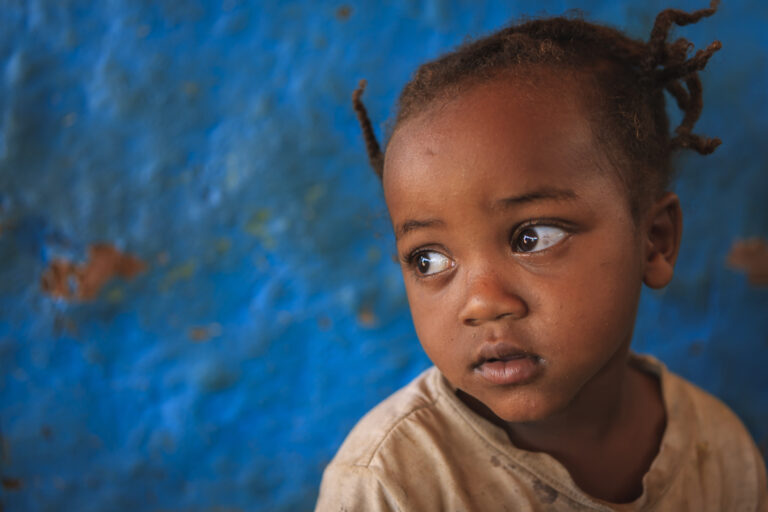Representatives of various national academies of sciences held a “Science Summit” in New Delhi, India, from 24-27 October, 1993. The meeting was held with the intent of providing a ‘scientific’ foundation for the resolutions of the United Nations International Conference on Population and Development (ICPD) which is to be held in Cairo, September 1994.
A statement was released by the scientists at the New Delhi meeting which called for a goal of “zero population growth within the lifetime of our children” (Population Summit of the World’s Scientific Academies, Joint Statement). It was drafted by the Royal Society of London, the U.S. National Academy of Sciences the Royal Swedish Academy of Sciences and the Indian National Science Academy (see PRI Review, vol. 4, no. l, Jan./Feb. 1993, 7).
Donning the ‘politically correct’ hat of the population control lobby, the scientists warned that a “doubling of the population” may be expected in the next half century with “most of this growth” taking place “in the developing countries.”
Courageously bearing the risk of being identified as shills for the monied interests of the industrialized West rather than as true scientists, the ‘scientific’ statement raised the spectre of “poverty, high childhood mortality, low status and educational levels of women, deficiencies in reproductive health services, inadequate availability and acceptance of contraceptives.” On the other hand, those who submit to internationally-directed population control programs will have “improved standards of living, such as increased per capita incomes, increased life expectancy, lowered mortality, increased adult literacy, and higher rates of female education and employment.”
Hinting at a leveling of western economic advantages and life styles vis-a-vis overall world development, the document objected to the “present levels of consumption by the developed world” in “countries with 85% percent of the gross world product and 23% percent of its population.” Without questioning the sincerity of the western-generated statement, it is nevertheless fair to ponder the openness of the industrialized world to the future development of the developing world. Implicit within these complaints are veiled suggestions of restrictions on development for all nations. Is the promise of wealth and unlimited progress the bait which beckons the nations of the world to bend to the yoke of those-who-know-best?
It is also fair to raise the question of who will benefit; will it be the people, the industrialists, national leaders, transnational economic planners? And who will pay the price? Eventually, in spite of myriad promises, the cost will be passed on to the people for it is considered pragmatically ‘wise’ to shunt the costs to those who ‘benefit’ from programs. Yet it is the people who, in the lexicon of the World Bank, are the ‘units of production’ who labor to produce the profits which too often accrue to others.
Strangely, in marked contrast to the optimism of World Bank leaders concerning world food production, the scientific academies pessimistically declared that, “in the last decade food production from both land and sea has declined relative to population growth. The area of agricultural land has shrunk… the availability of water is already a constraint…the earth is finite, and the natural systems are being pushed closer to their limits.”
One month after the New Delhi Summit, on the occasion of a World Bank Hunger Project meeting held in Washington, D.C. on 29 November 1993, Ismail Serageldin, World Bank Vice President for Environmentally Sustainable Development, issued a more optimistic press release relating to food production. Serageldin reported, “prices of agricultural commodities are at their lowest level in history; crop yields continue to rise faster than population; and world cereal yields grew more rapidly during the 1980s than in the preceding two decades.” “I am convinced,” he continued, “with the right policies, hunger can be conquered and the environment protected at the same time, if we all work together and, most of all, offer the poor the means to become more productive and hence to control their lives” (“World can cut hunger rate in half: combination of successful national programs and innovative ‘grassroots loans,’ World Bank Press Release 94/S32, Washington, D.C., 29 Nov. 1993).
Underlining a lack of consensus on population issues rather than the image of monolithic agreement which the academics attempted to project, disagreement and reluctance to conform to a pre-established mold curdled the accord of the New Delhi “Population Summit.” The scientists from Japan and Argentina stated that the issue was “outside their competence;” Spain, Georgia, Armenia and Italy “offered excuses for not signing;” and the scientists from Africa, Ireland and the Holy See refused to sign the statement (PRI Review, vol. 4, no. 1, 7).
A separate statement was prepared by the African Academy of Scientists (AAS), chaired by Professor Thomas R. Odhiambo. It was presented to the Population Summit by AAS Head of Programmes, Professor LK. Egunjobi. That statement is presented here in its entirety for your information.
The African Academy of Sciences
“The African Academy of Sciences has studied the draft statement intended to be issued at the Population Summit of the World Scientific Academies, and wishes to comment as follows:
“l. Care must be taken to acknowledge that while current rates of population growth and even absolute rates of population size may be and are a problem for particular countries, for Africa, population remains an important resource for development, without which the continent’s natural resources will remain latent and unexplored. Human resource development must therefore form part of the population/resource issue. The forthcoming 1994 U.N. International Conference on Population and Development must receive the message clearly.
“2. Part of the complexity of the population issue is that there are wide variations both between and within regions and countries. Consequently, the strategic planning needs of each country and region could vary very dramatically. Therefore, defining population as a global problem without qualification obscures this dimension. There cannot, therefore, be one target for all countries at all times. An African agenda would be very different.
“3. Population policy is not only about fertility regulation. Fertility is only one parameter that requires management. Policies relating to the entire health sector, migration and urbanization and socio-economic conditions (especially that of women) in a nation are important elements in an effective population policy.
“4. For ITIOSI African couples, marriage is not only for companionship, but also most importantly, for procreation. The statement completely ignores that for certain parts of Africa, infertility is a major problem. Family planning should also be designed to look into the problems of infertility, so that couples who desire may be able to procreate and meet their life desires. “
5. To imply that family planning is the panacea for fertility regulation and even development, is at least simplistic. An understanding of the social and cultural milieu of African societies is central to an analysis of the success or failure or the intrinsic value or otherwise of family planning programmes. In Africa, many of the so-called impediments to family planning have a rationality which require careful assessment.
“6. Whether or not the earth is finite will depend on the extent to which science and technology is able to transform the resources available for humanity. There is only one earth — yes; but the potential for transforming it is not necessarily finite.
“7. The international economic environment in which Africa’s development policies and programmes are defined and executed is an important variable in the population debate. The contribution of the North to Africa’s population predicament must be acknowledged in any suggestions as to how that situation is to be confronted.
“8. The Summit statement should envision specific actions and collaborative strategies by the various Academies in the wake of the Cairo conference. A special panel on population and development could be set up by the Scientific Academies to develop and refine such actions and strategies.”
Linkages with ICPD
It is not coincidence that the academies of science “Population Summit” reflect the draft recommendations of the International Conference for Population and Development (ICPD). The United Nations’ Population Fund (UNFPA) is the primary agency responsible for the ICPD conference. And like the Population Summit statement, Nafis Sadik, executive director of UNFPA, has also tied population size to “poverty alleviation, economic growth, empowerment of women, sustainable development” and the procurement of contraceptives for “family planning” programmes (UNFPA 1992 Report, 2, 19-20).
The ICPD draft also calls for the development of “cooperation” and “partnerships” necessary to initiate the planned socio-economic transformation contained within the World Population Plan of Action. The “partnership” between the United Nations and the various government and foundation-funded national academies of science exemplifies the UNFPA effort to involve science and academia in the effort to guarantee “participation” and “acceptance” of “enforceable measures to promote greater harmony between population, resources, environment and development” (ICPD Annotated Outline of the final document of the Conference, 11). The science academies’ “Population Summit” in New Delhi was funded by well-known population control foundations such as the Ford Foundation, MacArthur Foundation, Packard Foundation, and Rockefeller Foundation (Population Summit, joint statement).
In keeping with UNFPA predictions that population numbers will increase dramatically in the developing world, close to 30 percent of UNFPA’s world population budget is concentrated in Africa; 37 percent in Asia and the Pacific; 11 and 12 percent, respectively, is allocated to Latin America and the Caribbean, and interregional/global efforts (UNFPA Report 1992, 3).










